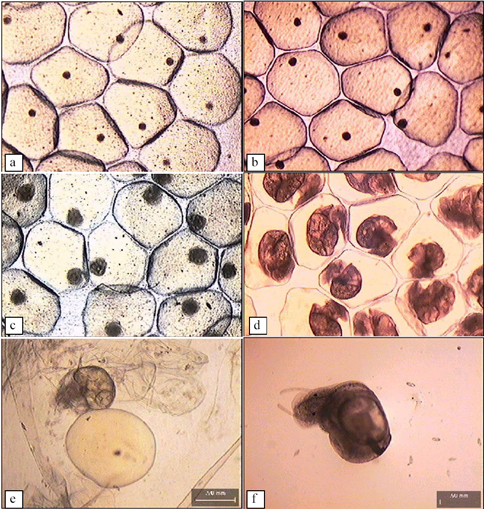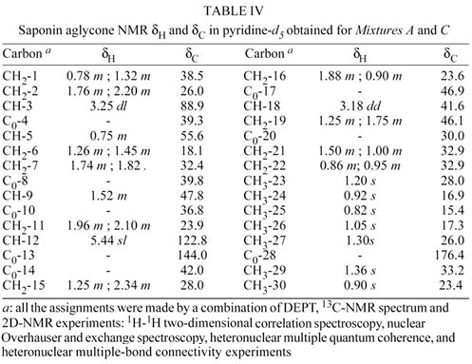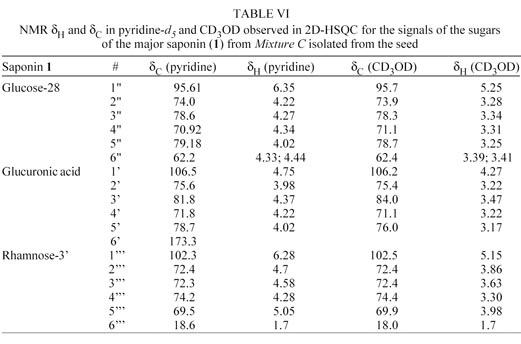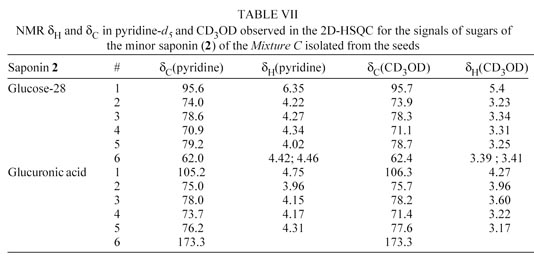The presence of saponins and the molluscicidal activity of the roots, leaves, seeds and fruits of Swartzia langsdorffii Raddi (Leguminosae) against Biomphalaria glabrata adults and eggs were investigated. The roots, seeds and fruits were macerated in 95% ethanol. These extracts exerted a significant molluscicidal activity against B. glabrata, up to a dilution of 100 mg/l. Four mixtures (A2, B2, C and D) of triterpenoid oleanane type saponins were chromatographically isolated from the seed and fruit extracts. Two known saponins (1 and 2) were identified as beta-D-glucopyranosyl-[alpha-L-rhamnopyranosyl-(1->3)- beta-D-glucuronopyranosyl-(1->3)]-3beta-hydroxyolean-12-ene-28 -oate, and beta-D-glucopyranosyl-(1->3)-beta-D-glucuronopyranosyl-(1 ->3)]-3beta-hydroxyolean-12-ene-28-oate, respectively. These two saponins were present in all the mixtures, together with other triterpenoid oleane type saponins, which were shown to be less polar, by reversed-phase HPLC. The saponin identifications were based on spectral evidence, including ¹H-¹H two-dimensional correlation spectroscopy, nuclear Overhauser and exchange spectroscopy, heteronuclear multiple quantum coherence, and heteronuclear multiple-bond connectivity experiments. The toxicity of S. langsdorffii saponins to non-target organisms was prescreened by the brine shrimp lethality test.
Swartzia langsdorffii; Leguminosae; chemotaxonomy; saponins; molluscicidal activity; schistosomiasis; Artemia salina










